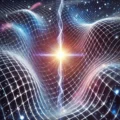Diversity of EM Energy Forms
Abstract
The electromagnetic (EM) spectrum, a cornerstone of modern physics, undergoes a transformative reinterpretation within the framework of Quantum Admittance (QA). This paper explores the EM spectrum from the perspective of QA, shedding light on its intricate divisions and underlying dynamics. From the quantum realm to particle and wave states, each segment of the EM spectrum reveals its unique characteristics within the QA framework, offering profound insights into the fundamental nature of energy propagation.
Introduction
In the realm of Quantum Admittance (QA), the electromagnetic (EM) spectrum emerges as a dynamic continuum of energy states, spanning from quantum fluctuations to macroscopic wave phenomena. This paper delves into the multifaceted divisions of the EM spectrum within the QA framework, illuminating its underlying principles and implications for energy propagation.
Divisions of the EM Spectrum
Within the QA paradigm, the EM spectrum is divided into three primary states of energy: quantum, particle, and wave. Each state embodies distinct characteristics and dynamics, reflecting the intricate interplay between quantum phenomena and admittance principles.
A spreadsheet showing the entire EM Spectrum in various powers of 10 is available with this link. The electromagnetic spectrum, from the shortest to the longest wavelengths. Imagine the Electromagnetic Spectrum as a Rainbow.
Quantum Energy State
At the quantum level, energy manifests as discrete fluctuations, ranging from approximately 4.14E+11 ev/c² to 4.14E+19 ev/c². While speculative, the existence of quantum QBits underscores the quantum nature of this energy state, representing fundamental units of information within the QA framework.
Particle Energy State
The particle energy state, governed by the standard model in particle accelerators, spans from approximately 8.16E+6 to 4.14E+11 ev/c². Despite advancements, delineating the boundary between particle and quantum energy remains challenging within the QA context, highlighting the intricacies of energy partitioning at this level.
Wave Energy State
In the wave energy state, energy propagates as oscillatory phenomena, spanning from approximately 2.00E-32 to 8.16E+6 ev/c². Characterized by variations in frequency and wavelength, this state encompasses seven distinct categories of waves, each with its own frequency range and energy profile.
Implications for Energy Propagation
The frequency spectrum of energy within the QA framework is inherently linked to the impedance of space, influencing the propagation speed and dynamics of energy transmission. Variations in energy density across different spatial contexts give rise to differential propagation speeds, shaping the observed characteristics of the EM spectrum.
Conclusion
The EM spectrum, as viewed through the lens of Quantum Admittance, offers a rich tapestry of energy states and dynamics, from quantum fluctuations to macroscopic wave phenomena. By elucidating the underlying principles governing energy propagation, QA provides a nuanced understanding of the EM spectrum and its implications for fundamental physics.
